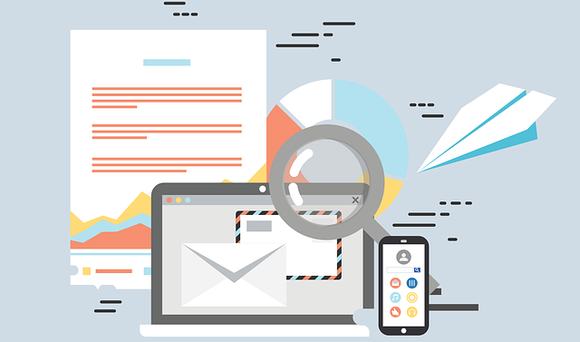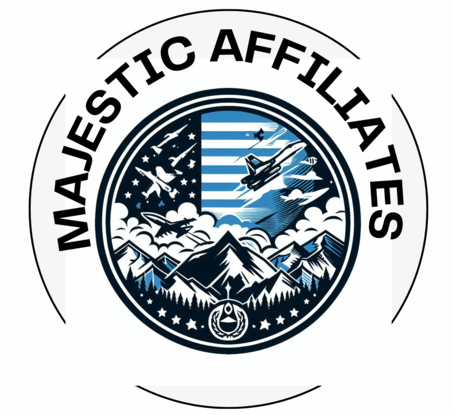Email outreach is a powerful and widely used strategy in link building, particularly for affiliate marketers looking to boost their site’s authority and search engine rankings. By reaching out directly to website owners, bloggers, and influencers, you can secure valuable backlinks that drive traffic and improve your SEO. This guide will walk you through the essentials of link building through email outreach, offering tips and strategies to maximize your success.

1. Why Email Outreach is Essential for Link Building
- Direct Communication: Email outreach allows you to directly connect with decision-makers who have the authority to add your link to their content.
- Builds Relationships: Beyond just securing a backlink, email outreach helps you build long-term relationships with influencers, bloggers, and site owners in your niche.
- Scalable Strategy: Once you’ve refined your outreach process, it can be scaled to reach a broader audience, increasing your chances of obtaining multiple backlinks.
- High Success Rate: Personalized and well-crafted outreach emails have a higher success rate compared to other link-building methods, especially when you’ve identified the right prospects.
2. Preparing for Email Outreach: Laying the Groundwork
1. Research and Identify Prospects
- Target Relevant Websites: Focus on websites that are relevant to your niche and have a good Domain Authority (DA). Tools like Ahrefs, SEMrush, and Moz can help you find potential link prospects.
- Analyze Competitor Backlinks: Use tools to analyze your competitors’ backlink profiles to identify websites that may also be interested in linking to your content.
- Segment Your Prospect List: Categorize your prospects based on factors like niche relevance, DA, and the type of content they publish. This will help you tailor your outreach emails effectively.
2. Crafting Link-Worthy Content
- Create High-Quality Content: Ensure that the content you want to promote is high-quality, informative, and provides value to the readers. Content types like comprehensive guides, original research, infographics, and case studies tend to attract more backlinks.
- Optimize Your Content for Outreach: Make sure your content is easy to link to by having a clear and concise URL structure, and by highlighting the key points that make it worth linking to.
3. Writing Effective Outreach Emails
1. Personalization is Key
- Use the Recipient’s Name: Always address the recipient by their name to make the email feel personal and less like a mass-produced message.
- Reference Their Work: Mention a specific piece of content from their site that you genuinely liked or found valuable. This shows that you’ve done your homework and are not just sending generic emails.
2. Craft a Compelling Subject Line
- Keep It Short and Relevant: Your subject line should be concise and give the recipient a reason to open the email. It could hint at the value you’re offering, such as “New Resource for [Recipient’s Site] Readers” or “Quick Question About Your Recent Post on [Topic].”
3. Build the Body of Your Email
- Start with a Compliment or Observation: Begin by complimenting the recipient on their work or pointing out something specific about their site that you appreciate.
- Introduce Your Content: Briefly introduce your content and explain why it would be valuable to their audience. Be clear about how your content complements or enhances their existing resources.
- Make a Polite Request: Politely ask if they would consider linking to your content. Make it easy for them by providing the exact URL and even suggesting anchor text.
- Keep It Brief: Time is valuable, so keep your email concise and to the point. Aim for around 150-200 words.
4. Include a Clear Call-to-Action
- Be Direct: End your email with a clear call to action, such as “Would you be willing to add this link to your post?” or “I’d love to hear your thoughts on this.” This encourages a response and action from the recipient.
5. Follow Up, But Don’t Spam
- Send a Follow-Up Email: If you don’t hear back within a week, it’s okay to send a polite follow-up. Keep it short, and reference your original email. Avoid spamming with multiple follow-ups; one or two should suffice.
4. Best Practices for Successful Email Outreach
- Use an Outreach Tool: Consider using outreach tools like BuzzStream, Hunter, or Mailshake to streamline your email outreach process. These tools help you manage your contacts, track responses, and automate follow-ups.
- Test and Optimize: Experiment with different subject lines, email copy, and outreach strategies to see what works best. Regularly review your metrics and refine your approach accordingly.
- Monitor Your Success: Track the success of your outreach efforts by monitoring the number of responses, backlinks obtained, and any increase in traffic or SEO rankings.
5. Overcoming Common Challenges in Email Outreach
- Low Response Rates: If you’re getting a low response rate, consider refining your email template, increasing personalization, or targeting different prospects.
- Rejections and Negative Feedback: Not every outreach will be successful, and you may receive rejections. Use this feedback to improve future outreach efforts. If you receive negative feedback, remain polite and professional.
- Spam Filters: To avoid your emails landing in spam folders, avoid using overly promotional language, keep your emails concise, and ensure that your email server has a good reputation.
6. Examples of Successful Email Outreach Campaigns
- Example 1: Content Promotion for a Comprehensive Guide
- A detailed guide on [Topic] was shared with relevant websites. The outreach focused on how the guide complemented their existing content and provided additional value to their readers. The result was multiple backlinks from high-authority sites.
- Example 2: Promoting an Infographic
- An infographic on [Subject] was created and shared with niche bloggers and industry websites. The outreach emphasized the visual appeal and shareability of the infographic, leading to high engagement and numerous backlinks.
Conclusion
Link building through email outreach is an essential strategy for affiliate marketers looking to enhance their site’s SEO and drive more traffic. By carefully selecting your prospects, crafting personalized and compelling emails, and following best practices, you can build valuable backlinks that contribute to your long-term success. Remember, persistence and consistency are key, and with the right approach, email outreach can become one of the most effective tools in your link-building arsenal.
